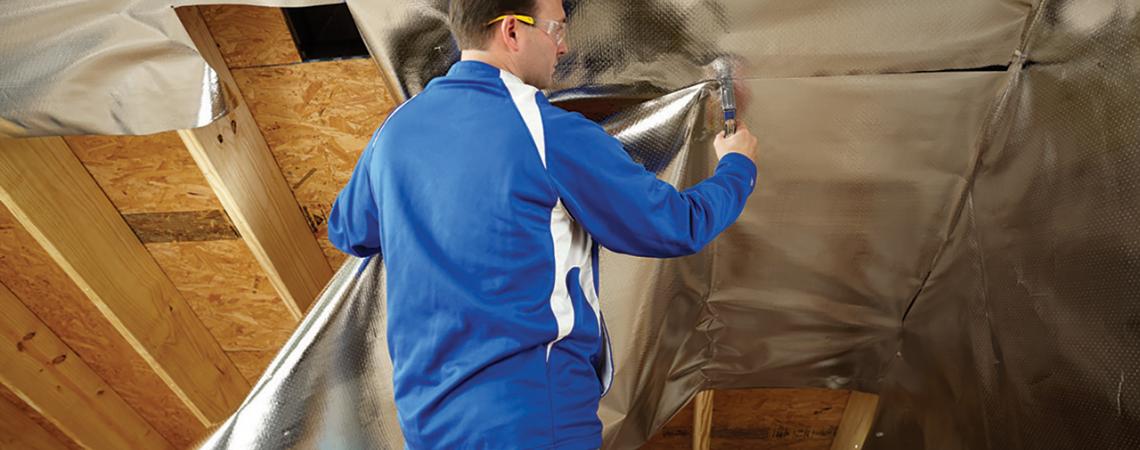In many homes, a radiant barrier can help owners save money.
Homeowners are constantly looking for ways to help keep heat in a home during the winter and to keep heat out in the summer. One of the best ways to do that is to use a radiant barrier.
There are three different ways heat travels: Convection is air movement from hot to cold, which happens through openings such as doors, windows, vents, and leaks; conduction is heat traveling through a solid material, such as the sheetrock and framing of a home, which can be minimized by insulation; and radiant heat loss is a transfer of heat from the sun, or when a warmer material transmits infrared radiation to a colder material — and this is what radiant barriers are designed to stop.
Radiant barriers are often installed in attics, where radiant energy from the sun is sent back out through the roof before it can heat the air and insulation below. It is commonly sold as a roll of shiny, aluminum material and is usually mounted on the underside of the framing that supports the roof, because it must have at least an inch of air to reflect the energy back into. Importantly, radiant barriers are not effective either as insulation or as wraps that block air loss — but they are effective at their intended purpose, able to reflect as much as 95 percent of the radiated heat back through the roof if installed properly, with an air gap between itself and the roof.
The net impact of a radiant barrier depends on whether you live in a hot or cold area. In colder climates, the radiant barrier that reflects unwanted heat back outside of the house in the summer will also reflect heat away from the house in the winter — though it also will reflect radiant heat from inside back into the house instead of letting it escape through the roof.
So, is a radiant barrier a good investment? Sometimes. Savings vary in different situations, so proper research is absolutely called for. In Ohio, the cold winters make for especially tricky estimates, so a qualified energy advisor from your local electric cooperative may be able to help sort out the potential savings compared with, say, sealing leaks or adding insulation.
Pat Keegan writes for Collaborative Efficiency, an energy communications company.









